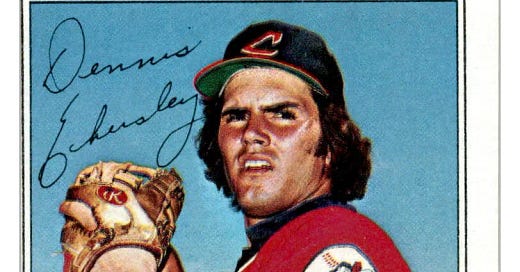On June 4, 1977, in a game at the Kingdome against the expansion Seattle Mariners, Indians centerfielder Rick Manning was having a great night.
He’d been struggling so far that season, batting just .224 with 3 homers entering the game. It was a disappointing start, well below the team’s expectations. Manning hit .285 as a rookie two years earlier, and .…
Keep reading with a 7-day free trial
Subscribe to Lost in Left Field to keep reading this post and get 7 days of free access to the full post archives.



